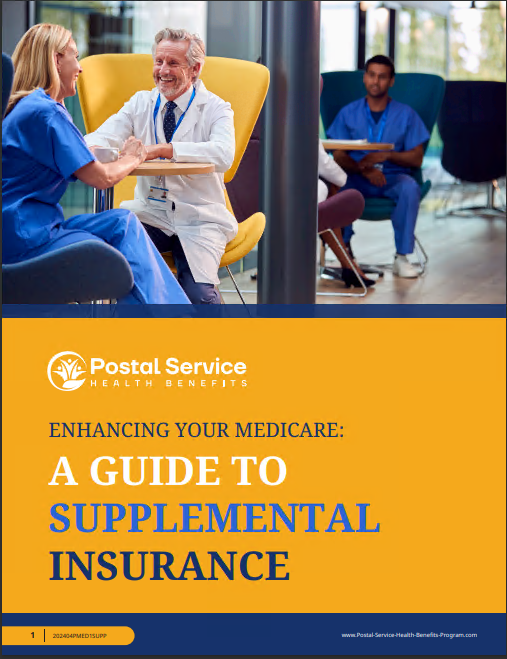Key Takeaways:
-
The new Postal Service Health Benefits (PSHB) program in 2025 will impact active employees, retirees, and their families with tailored plans and new Medicare requirements.
-
Early preparation ensures you can make the most of your healthcare options and avoid coverage gaps.
A New Chapter in Postal Healthcare
As a USPS employee or retiree, you’re about to experience one of the most significant healthcare changes in decades. Starting January 1, 2025, the Postal Service Health Benefits (PSHB) program will replace the Federal Employees Health Benefits (FEHB) system for postal workers.
The shift isn’t just a policy update; it’s a complete redesign of healthcare coverage, aiming to meet the unique needs of USPS employees and their families. Here’s what you need to know to navigate this transition and make it work for you.
What’s the Timeline for These Changes?
Key Dates to Remember
-
Open Season: November 11 to December 9, 2024. This is your opportunity to explore, compare, and select your new PSHB plan.
-
Coverage Start Date: January 1, 2025. The new plans officially take effect.
By marking these dates on your calendar, you’ll ensure you’re prepared to make informed decisions about your coverage. Waiting until the last minute could leave you with a plan that doesn’t fully meet your needs.
How Will PSHB Change Things?
USPS-Specific Plans
PSHB plans are designed exclusively for postal workers, offering benefits that better align with your job and retirement needs. These tailored plans include:
-
Enhanced Medicare integration for retirees.
-
Cost-saving features to manage out-of-pocket expenses.
-
Expanded coverage options to address specific healthcare priorities.
Unlike FEHB, which caters to a broader federal workforce, PSHB focuses on the unique requirements of USPS employees and their families.
Medicare’s Role in PSHB
The Importance of Medicare Part B
For retirees eligible for Medicare, enrolling in Medicare Part B is essential under PSHB. Here’s why:
-
Medicare will act as your primary insurance, covering most medical services.
-
PSHB will provide secondary coverage, reducing out-of-pocket costs for copayments and deductibles.
This combination ensures comprehensive healthcare coverage while keeping expenses manageable. If you’re not already enrolled in Medicare Part B, now is the time to start planning your enrollment.
Are There Exceptions?
Some retirees may not need to enroll in Medicare Part B. For example:
-
Retirees who left the workforce before January 1, 2025, might qualify for an exemption.
It’s essential to confirm your status with USPS resources or a benefits counselor to avoid unnecessary costs or penalties.
What About Costs?
Premium Contributions
Much like the FEHB system, the federal government will continue to contribute significantly to your premiums under PSHB. However, the exact amount you’ll pay depends on the plan you choose. This makes reviewing your options during Open Season critical to finding the best value for your money.
Prescription Drug Savings
One of the standout features of PSHB is its integration with Medicare Part D, which introduces a $2,000 annual cap on out-of-pocket prescription drug costs starting in 2025. This cap is a major win for retirees who rely on high-cost medications.
Flexible Payment Options
PSHB plans will also offer ways to spread large prescription expenses over time, helping you better manage your healthcare budget.
How to Prepare for Open Season
Step 1: Review Your Current Plan
Start by assessing your existing FEHB coverage. Consider:
-
Does your current plan meet your healthcare needs?
-
Are your preferred doctors and specialists in-network?
-
How well does it handle prescription drug costs?
Understanding where you stand now will help you identify areas for improvement under PSHB.
Step 2: Research New Plans
Once Open Season begins, take time to compare the available PSHB plans. Focus on:
-
Cost-sharing details like deductibles, copays, and coinsurance.
-
Provider networks to ensure your current providers are included.
-
Extra perks like telehealth services and wellness programs.
Step 3: Confirm Medicare Enrollment
If you or your family members are eligible for Medicare, confirm your enrollment in Part B. Acting now ensures you’ll meet PSHB requirements and avoid penalties or coverage gaps.
What Does This Mean for Retirees?
Better Coordination of Benefits
PSHB’s integration with Medicare streamlines your healthcare coverage, reducing costs and simplifying the billing process. By aligning benefits, the program ensures retirees can access comprehensive care without unnecessary financial strain.
Prescription Drug Cap
The $2,000 annual cap on prescription drug costs is a game-changer for retirees who depend on expensive medications. This feature alone could save hundreds or even thousands of dollars annually.
Protecting Your Financial Future
Failing to enroll in Medicare Part B on time can result in penalties and higher premiums. By acting early, you can avoid these pitfalls and ensure your healthcare remains uninterrupted.
Active Employees: Why PSHB Matters to You
Immediate Benefits
Even if you’re not nearing retirement, PSHB offers improved healthcare options now. These include:
-
Expanded provider networks for more comprehensive care.
-
Wellness programs designed to help you stay healthy and proactive.
-
Cost-sharing structures that could reduce your out-of-pocket expenses.
Long-Term Planning
Understanding PSHB today prepares you for a smoother transition when retirement comes. The decisions you make now can influence your healthcare costs and coverage for years to come.
Tools and Resources to Help You Navigate the Change
USPS and OPM Support
Leverage the resources provided by USPS and the Office of Personnel Management (OPM) to make informed decisions. These include:
-
Online plan comparison tools.
-
Informational webinars during Open Season.
-
Customer service hotlines for personalized guidance.
Consult a Benefits Counselor
If you’re feeling overwhelmed, a benefits counselor can provide tailored advice to help you choose the best plan for your needs.
What This Means for Your Family
Coverage for Dependents
PSHB plans will continue to offer coverage for eligible family members, including spouses and dependents. Reviewing plan options during Open Season ensures your family’s healthcare needs are met without unexpected costs.
Preparing for the Future
With better cost-sharing features and expanded networks, PSHB plans could provide your family with improved access to quality care. Planning now helps protect your family’s health and finances.
Why Early Preparation Is Key
The transition to PSHB isn’t just a routine change—it’s an opportunity to rethink how you manage your healthcare. By taking time to review your options, enroll in Medicare Part B if needed, and explore plan features, you can maximize your benefits and avoid unnecessary costs.
Don’t wait until the last minute. Start preparing today to ensure your coverage is ready for 2025 and beyond.







